Eastern teaberry is an edible wild herb with a flavor like wintergreen mints also known as wild wintergreen, checkerberry and Gaultheria procumbens. The plant contains a compound similar to aspirin, and humans have used it as a flavoring and medicine for a very long time. In this post we'll go over the basics of how to identify the plant and its look a likes, and use the different edible parts in cooking.

Wintergreen will always have a special place in my heart as the first plant I ever foraged after walking on some plants that smelled like mint on a trip to the Boundary Waters with my father.
Dad told me I could use the leaves to make tea, which I found fascinating, partly because the wild "tea" I made used equal parts sugar and water. Boiling the wild leaves with lake water, marveling at the minty aroma wafting in the air made me feel like like a wizard.
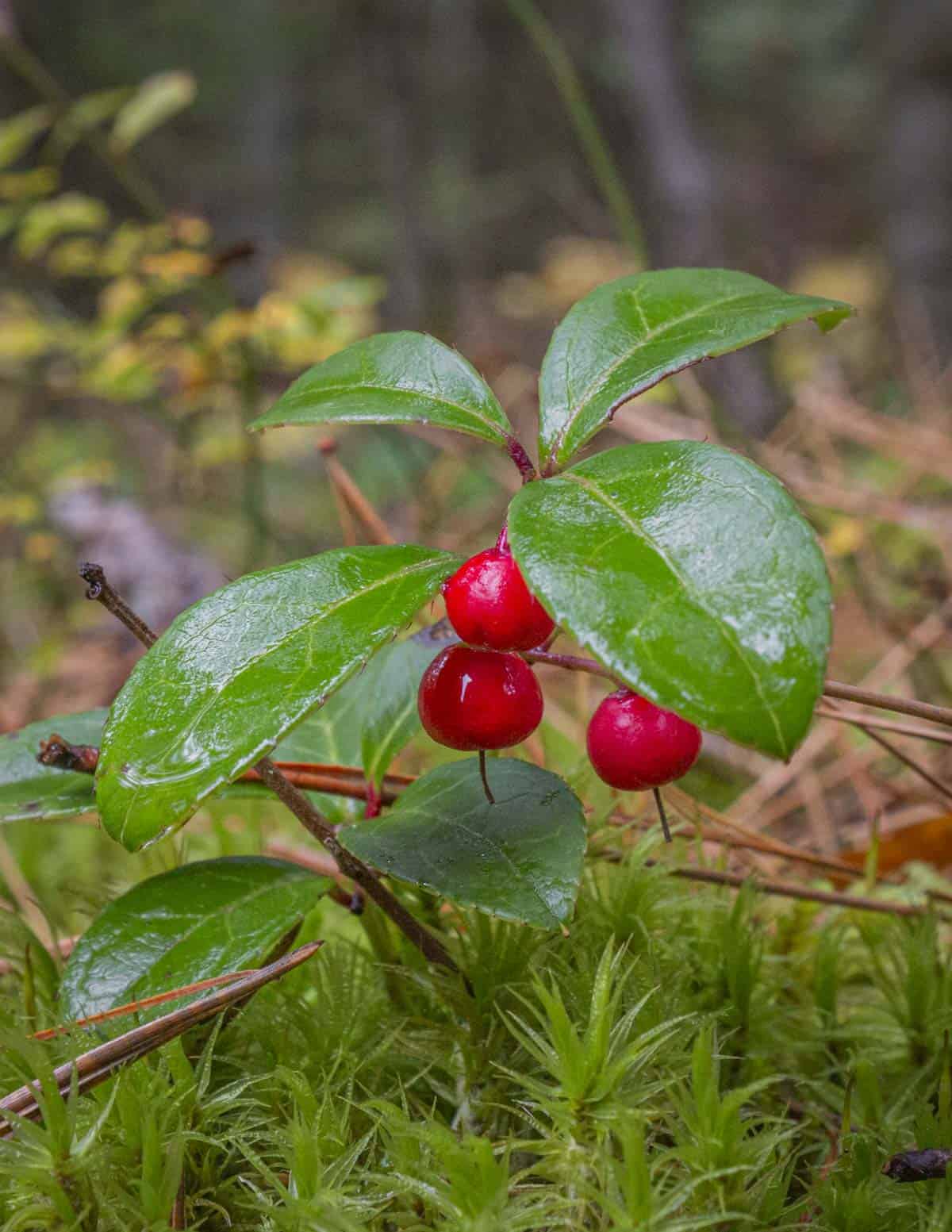
What is Teaberry?
Gaultheria procumbens is a small evergreen shrub in the heath family (Ericaceae). It grows in coniferous woods in small colonies that spread by rhizome. I know it as a companion or indicator plant as it grows near other edibles that can tolerate acidic soil such as hazelnuts, serviceberries, blackberries, wild cherries and wild blueberries.
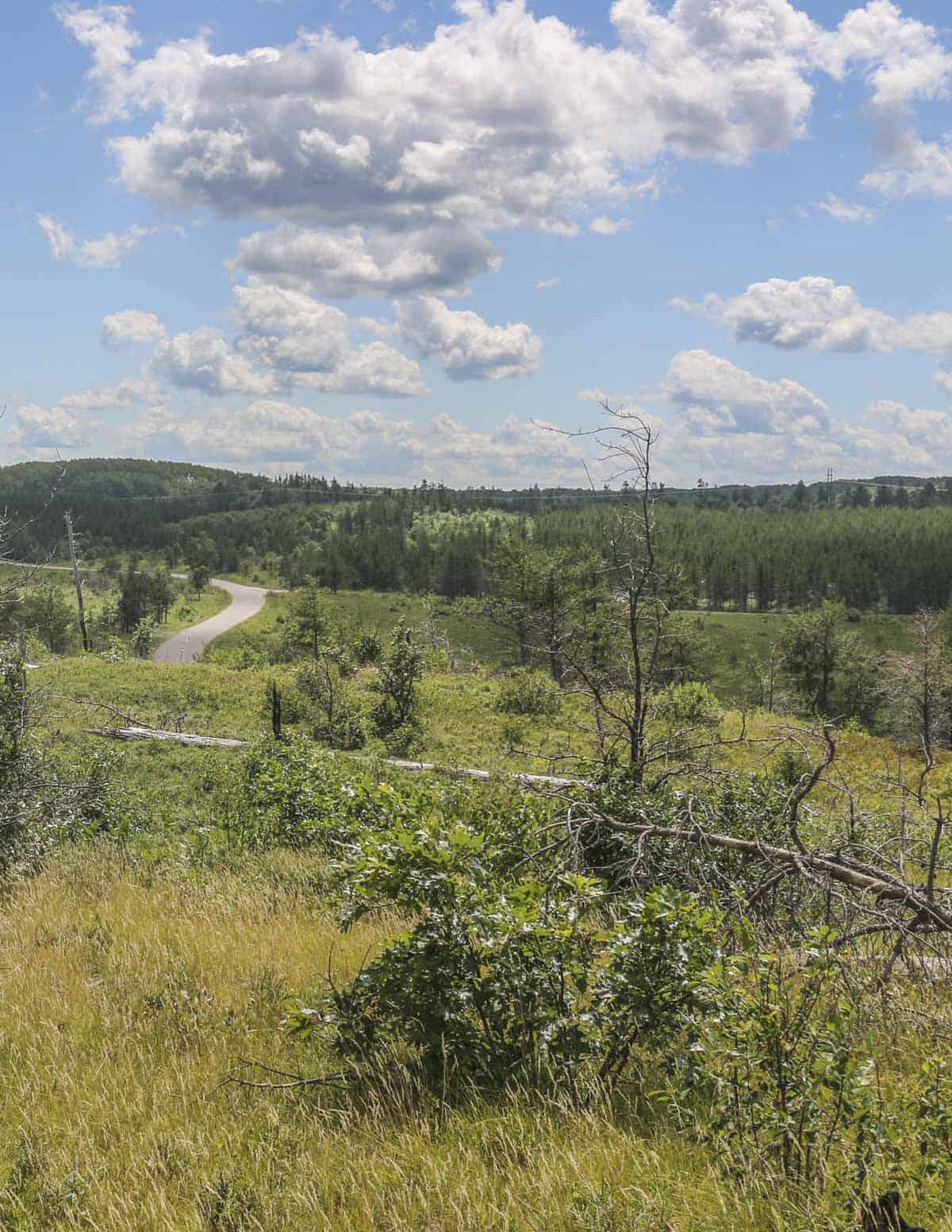
The plant grows in Northeastern North America from Maine west to Minnesota, including southern parts of Quebec, Ontario and Manitoba. It can be found as far south as North Carolina. I often see it on the North Shore of Lake Superior in Minnesota and in the South Shore and Pine Barrens of Northern Wisconsin.

Humans have used wintergreen for ages as a food and medicine. In our modern era this is done using wintergreen oil, which is used as a flavoring in foods like teaberry ice cream, candies and Clarks Teaberry chewing gum. It's also used in in pharmaceutical products as it contains a compound comparable to aspirin.
Identification
These are small plants where I live, never getting more than a few inches high when I'm in coniferous woods. The shiny, glossy leaves with blunt tips stick out like a sore thumb. As an evergreen plant, they can be also be found year-round.

Leaves
The elliptical leaves are leathery, tough and aromatic, having a minty aroma when crushed in hand or underfoot. The stems are a brick red color, thin, tough and fibrous.
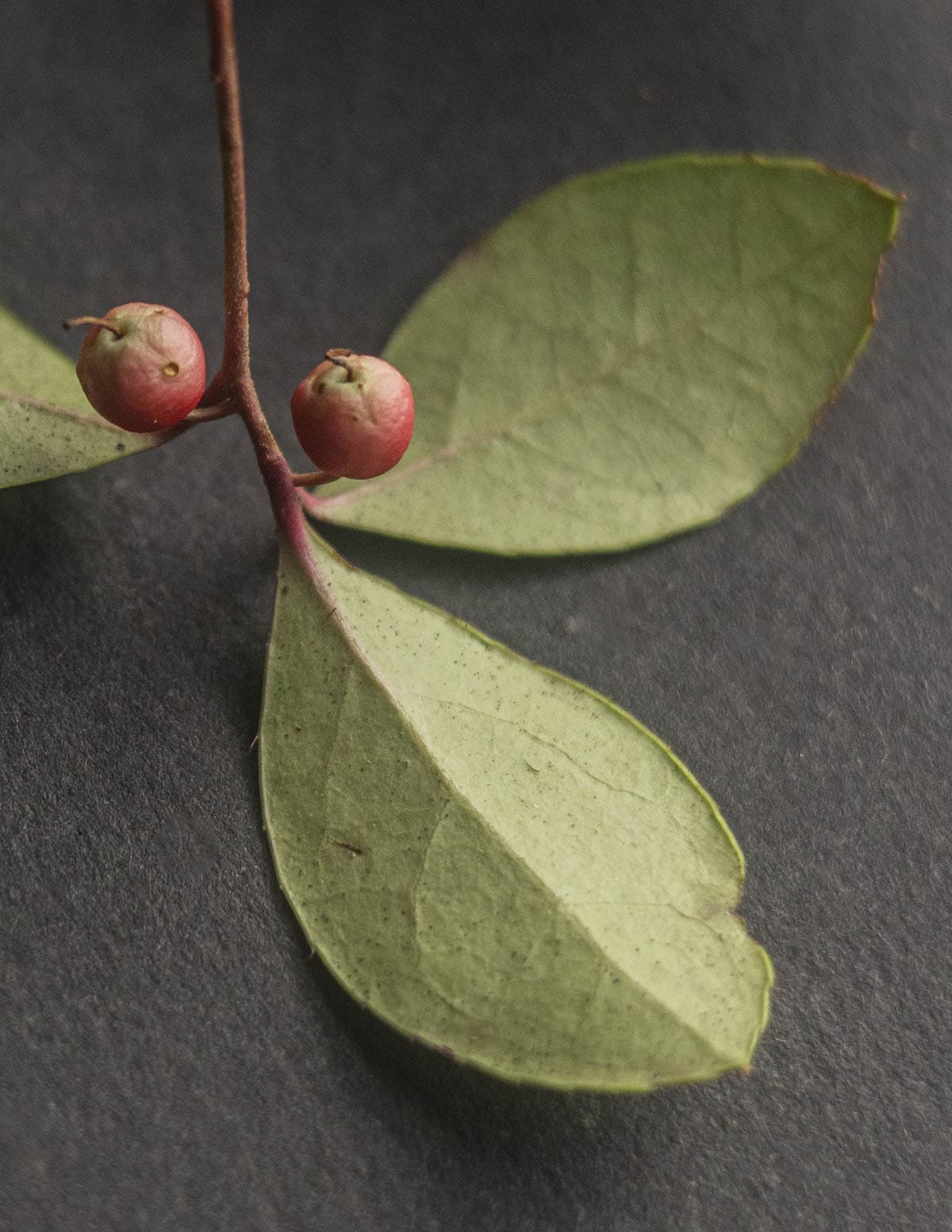
Another characteristic of the leaves I notice is the distinct venation and glossy, shiny appearance. If you look closely at the image below you can also see the tiny hair-like bristles on the leaf edge.
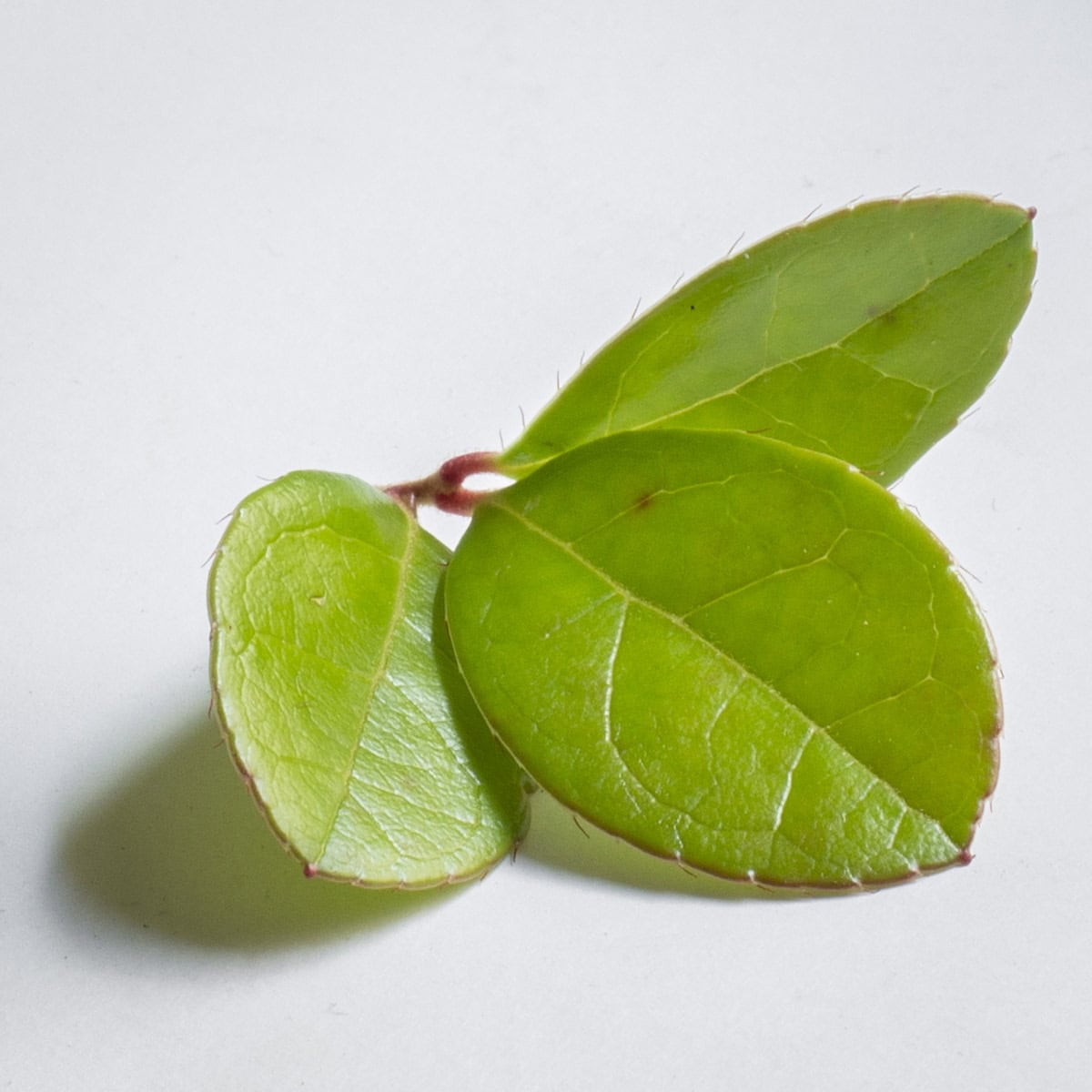
Wintergreen Berries
The berries appear in summer and ripen in autumn, but will overwinter and can also be harvested in the spring.
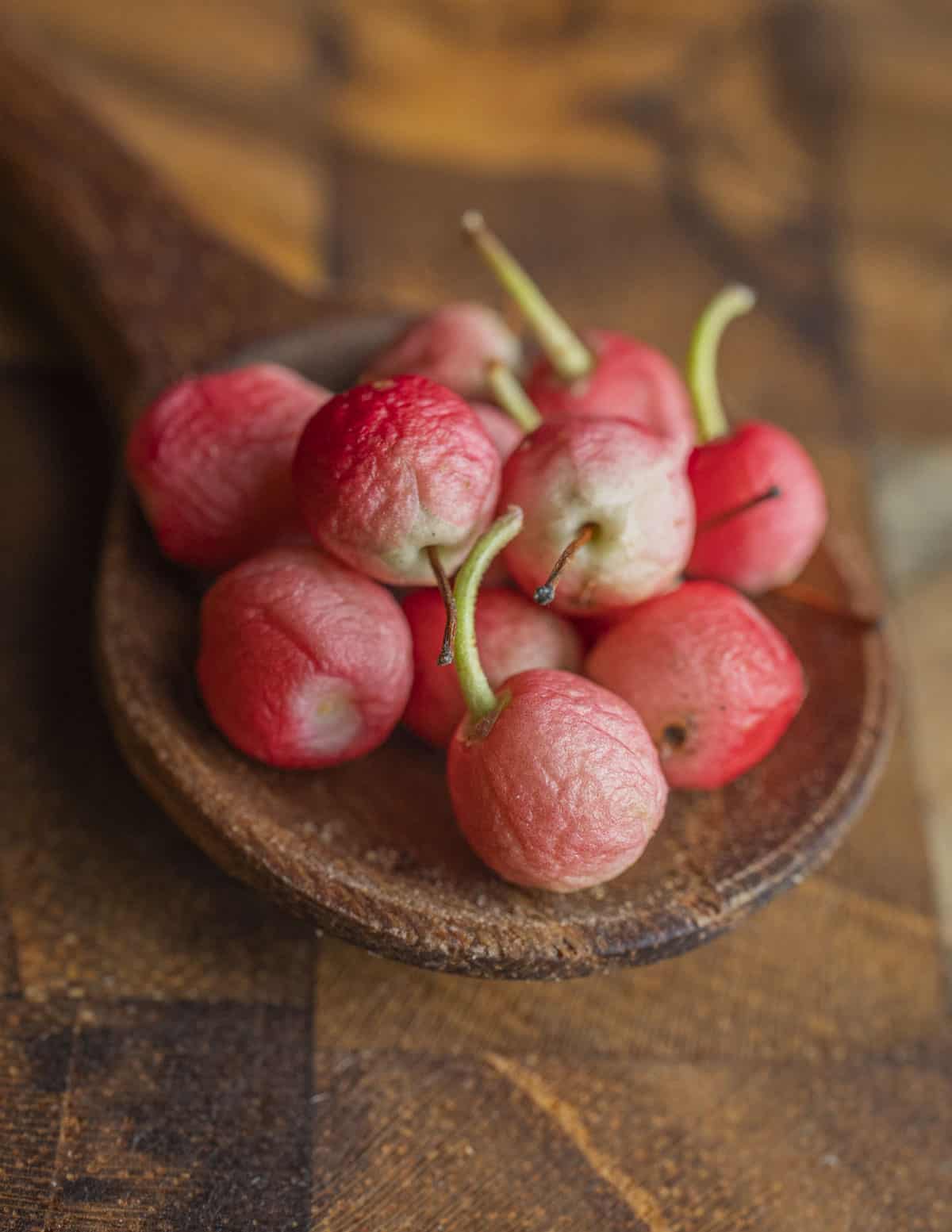
Typically plants are said to produce 1-5 berries, but in Minnesota and Wisconsin I often don't see that many fruits. The fruit I harvest also seem smaller than others I've seen from the East Coast. As they contain a sort of natural aspirin, they should be eaten in moderation.
Look-Alikes
There's a few plants that could be confusing at a glance, but as long as you make sure the plant smells like wintergreen mints you'll be fine. Besides G. procumbens there's also Gaultheria fragrantissima, a related, edible plant native to Southeast Asia that's harvested to manufacture oil of wintergreen.
Spotted wintergreen (Chimaphila maculata)
I've had a few messages occasionally asking about spotted wintergreen from Alaska called periwinkle or pipsissewa.
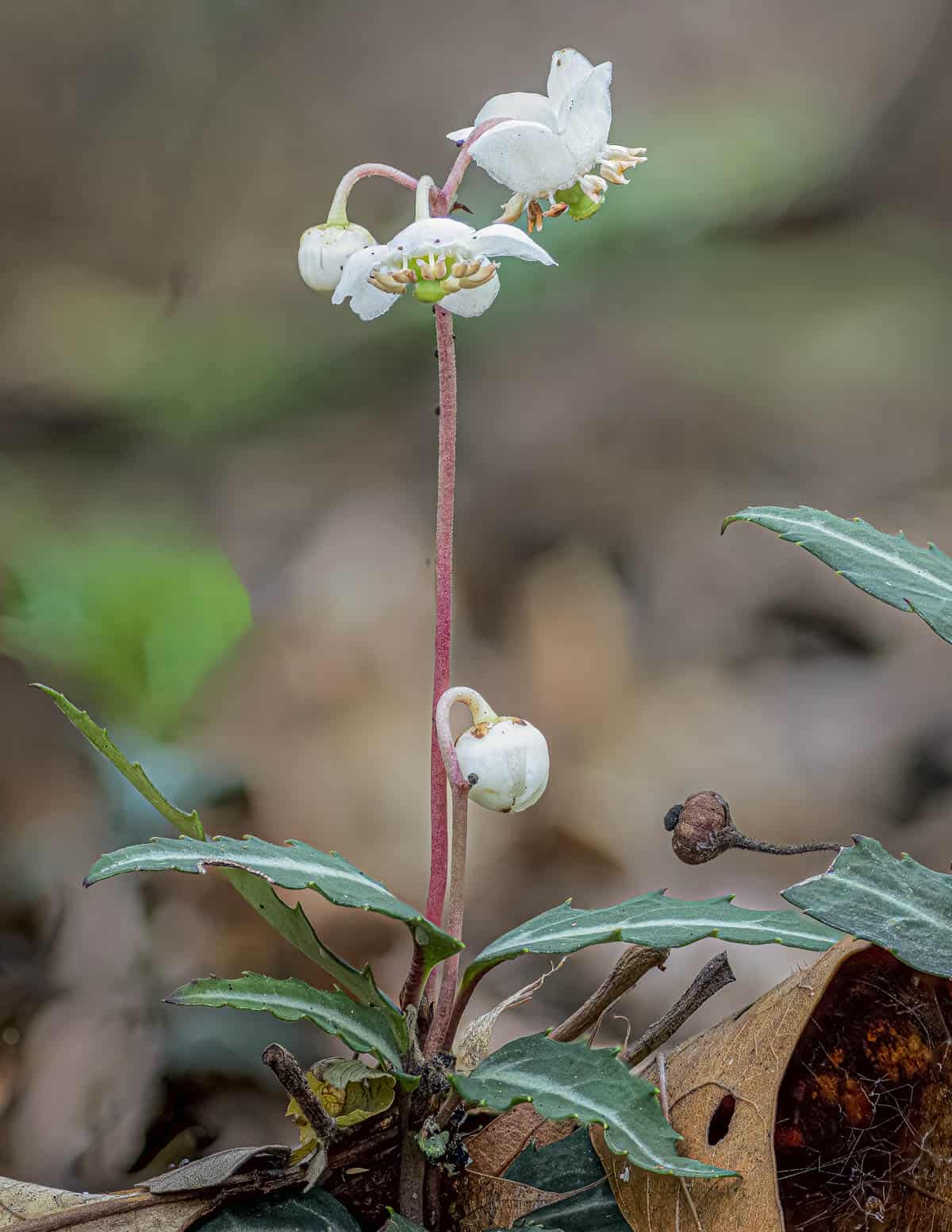
Although some claim it's used in folk remedies and homeopathic medicine, all my references point to it being moderately poisonous so it's probably best to avoid it. It also lacks the minty aroma of true G. procumbens.
Partridge Berry (Mitchella repens)
Another small evergreen plant, partridgeberry is more widespread than G. procumbens, growing in hardwood and coniferous forests across a much larger range that extends down from Minnesota to Texas. Sam Thayer says the berries are edible but have little flavor and would be difficult to harvest in quantity. The leaves also lack the wintergreen aroma of G. procumbens.
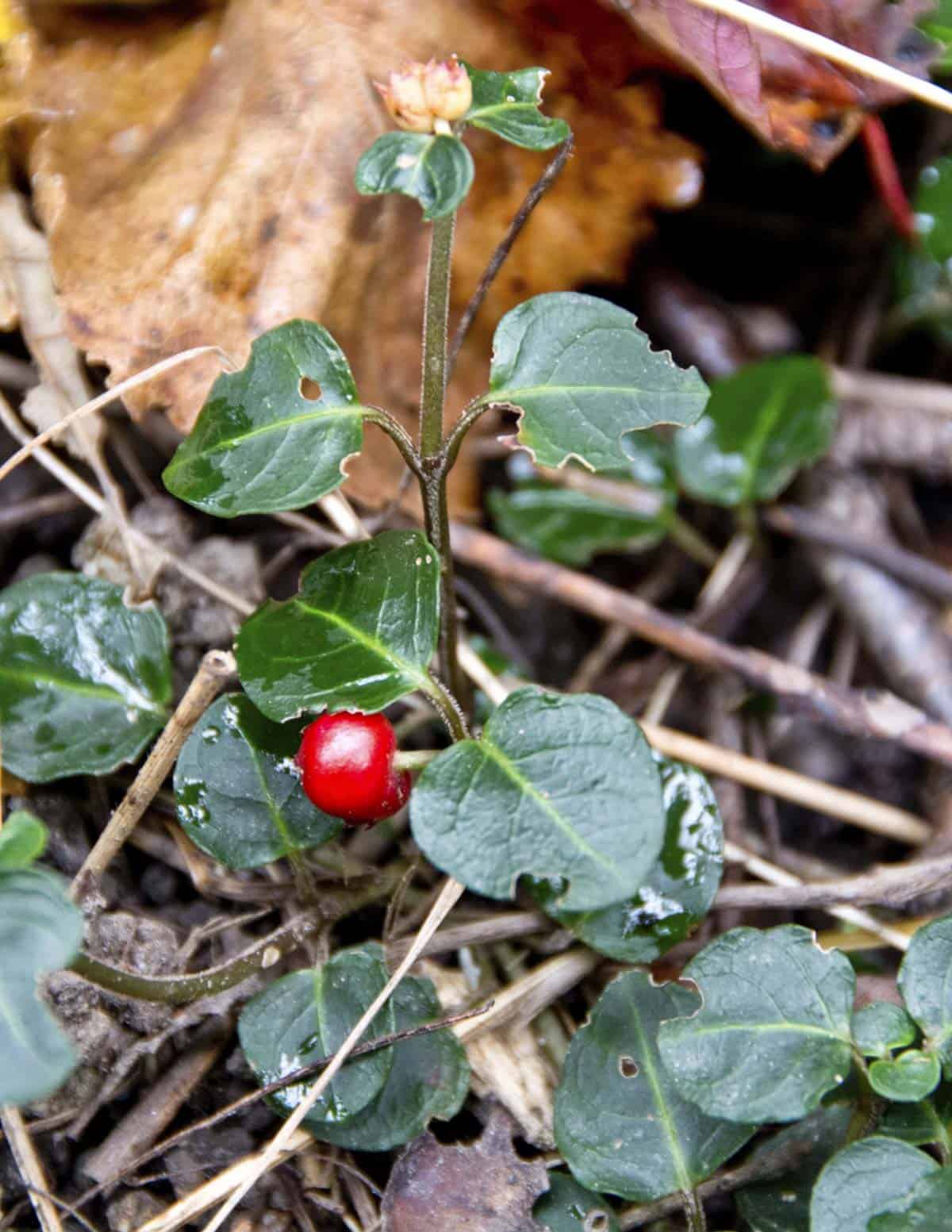
Bearberry (Arctastaphylos uva-ursi)
Bearberry is another plant in the Heath family that can grow in the same area. It has small spoon-shaped leaves and berries that grow in small clusters. It can be separated from G. procumbens as each fruit has a calyx as shown in the picture below. The leaves also lack the aroma of G. procumbens.
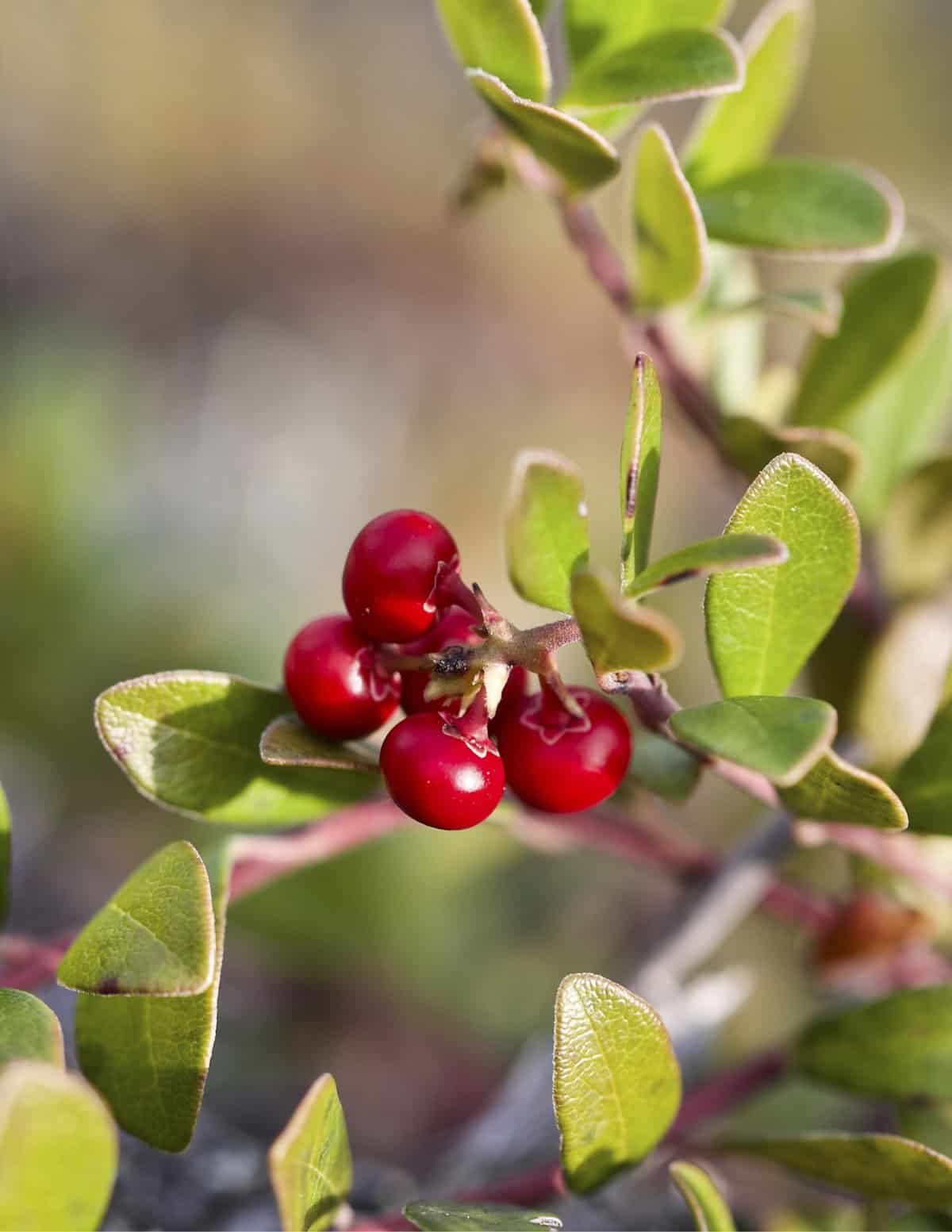
Foraging authority Sam Thayer says the berries don't taste pleasant and aren't really worth the trouble. The leaves also lack the aroma G. procumbens has.
Cooking with Gaultheria procumbens' Edible Parts
The leaves and berries of the plant are both edible but are more of a flavoring than a food. The berries are delicious and make a great garnish, the leaves are very tough and should be used in cooking like bay leaves.
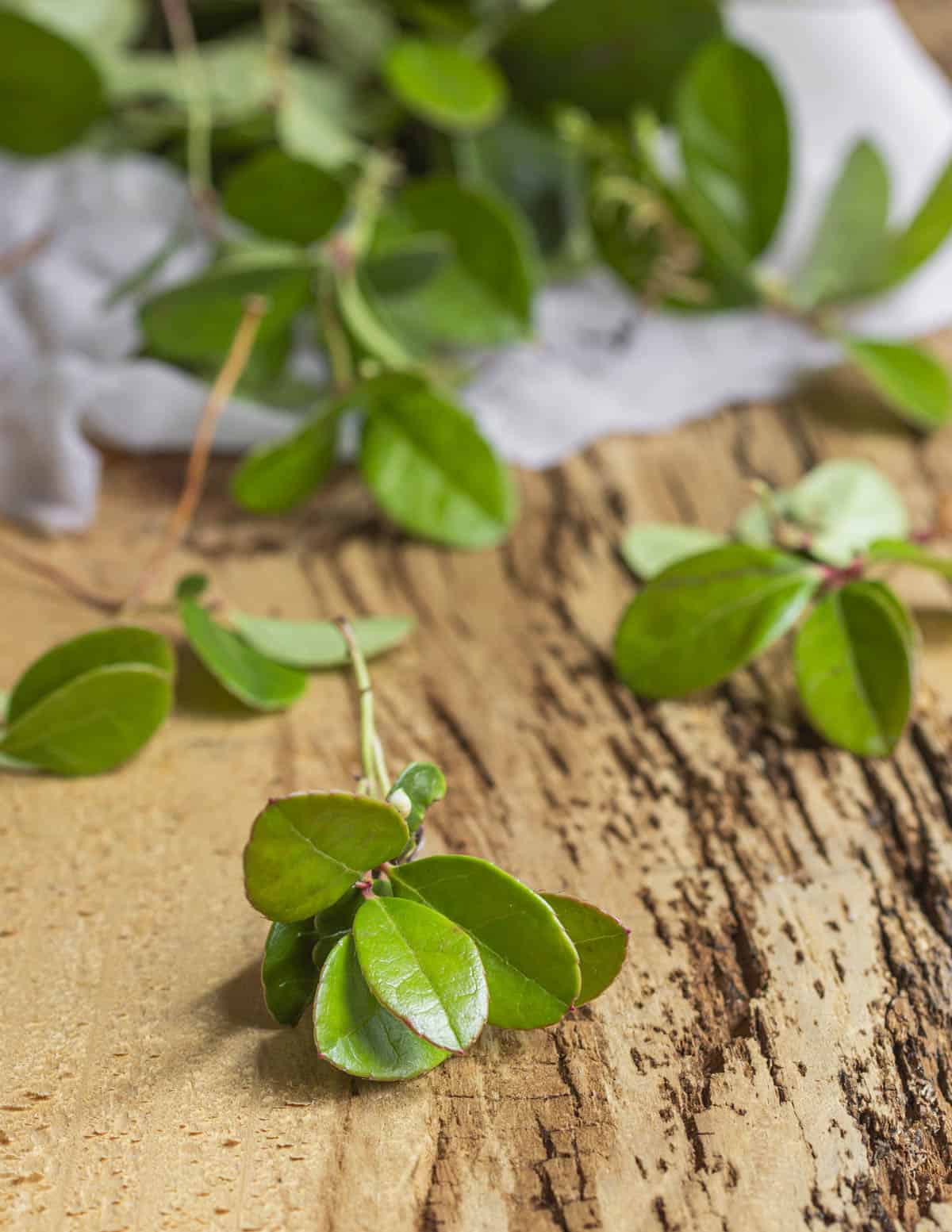
By far the most famous food the plant is used to flavor (relatively speaking) is teaberry ice cream, which is only available in Pennsylvania.
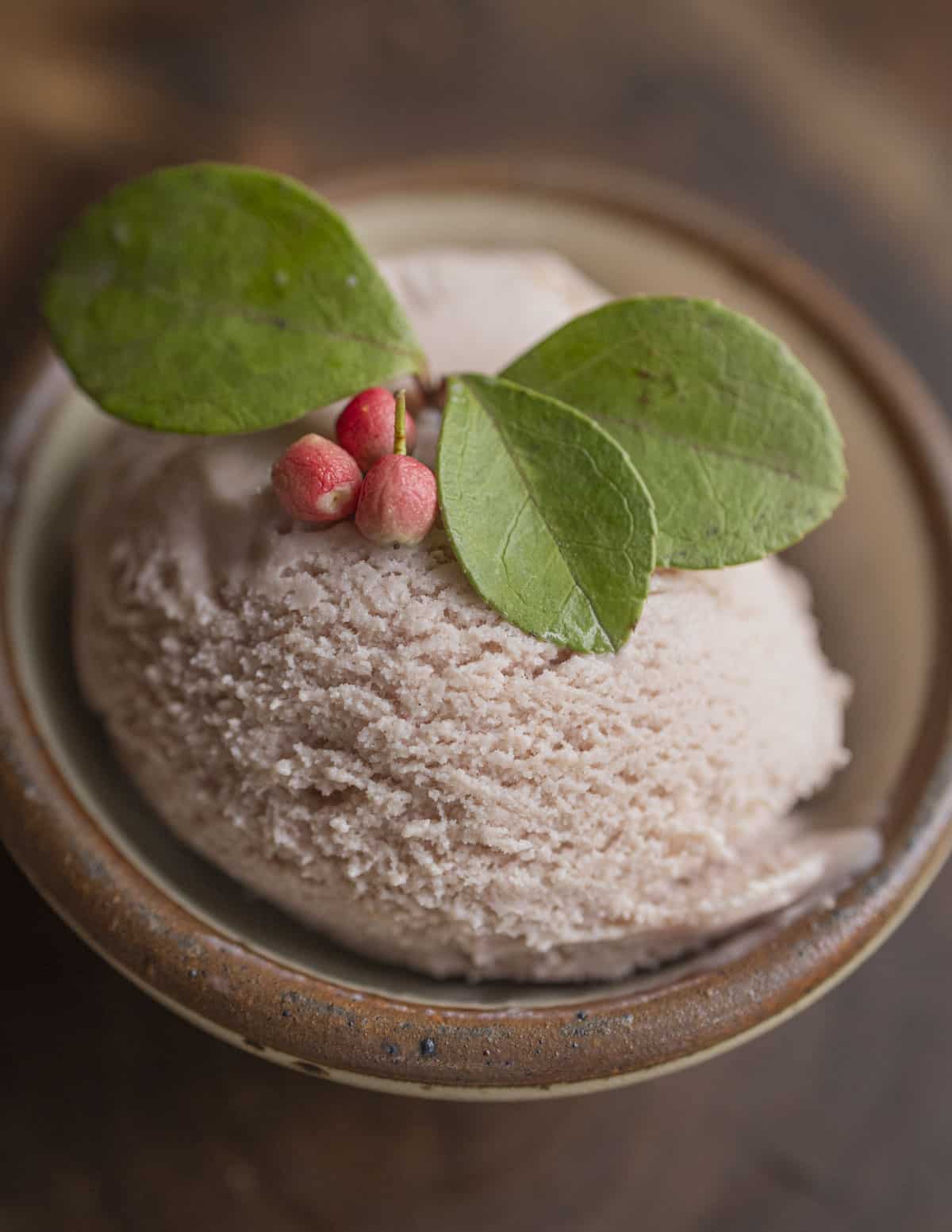
There's a few different ways you can use this plant I have experience with, if you have any other methods to add please leave a comment.
Fresh Leaves
The fresh leaves are the easiest to harvest and have a great wintergreen flavor. You can substitute them for mint in recipes. One of my favorite things to do is to add whole leaves to simple fruit sauces. Try simmering a pan of strawberries with a few leaves and serving it on poundcake or shortbread.

For the strongest flavor, the leaves should be crushed, muddled or minced and left to infuse into a dish overnight or for a few days.
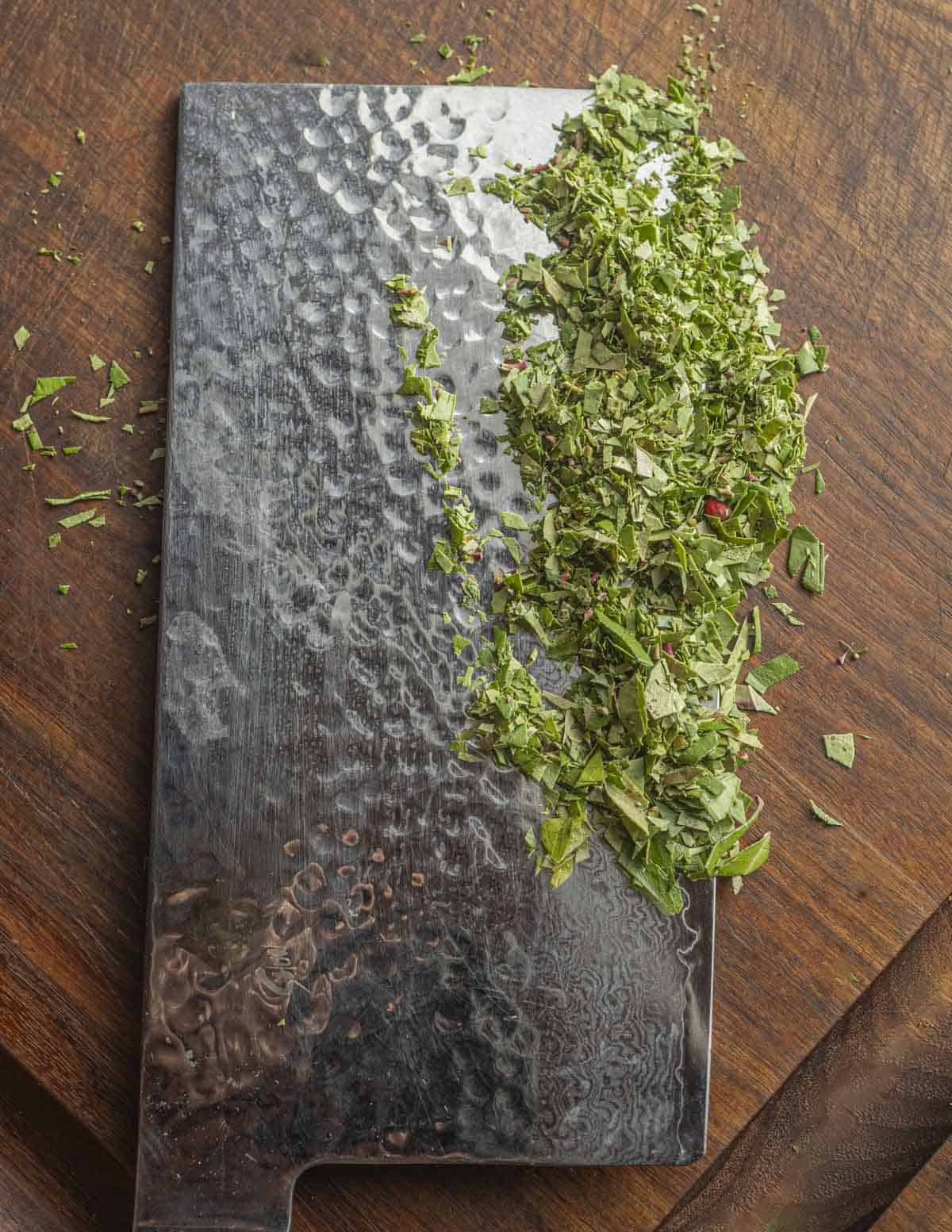
They can also be cooked directly in sauces, like the strawberry-wintergreen sauce I borrowed from my friend Chef Sean Sherman in the image above. Discard the leaves before serving or strain them out. The aroma infuses well into dairy-based desserts too.
Of course, there's also wintergreen tea. To make it, simmer a large handful (ten grams) of very fresh leaves in a four cups of water until you can taste it sweeten if you like and drink. It's nice in a mug sipped around a campfire.
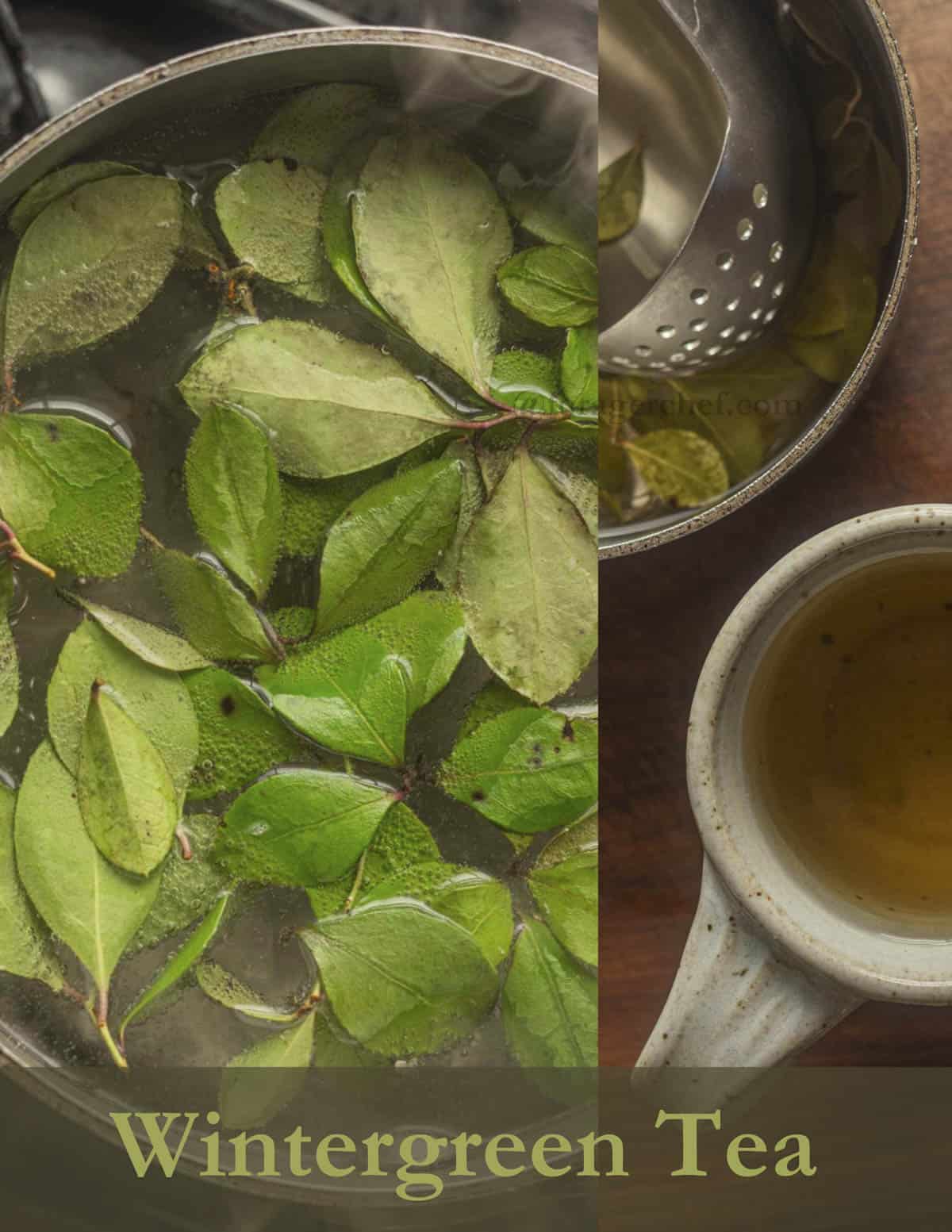
Berries
If you live in a place where the berries are bountiful you're lucky. The attractive pink fruit can be added to desserts whole or sprinkled on dishes raw for a pop of wintergreen flavor.
They're the perfect garnish for teaberry flavored ice cream or mixed into fruit preparations raw and cooked. Below is a mixture of blueberries, strawberries and lemon verbena I spooned over panna cotta.

How to Make Wintergreen Extract
Probably the most well-known wintergreen recipe to make at home is a simple extract. The aroma is very alcohol soluble so an extract is one of the easiest ways to enjoy it.

To make it, simply cover fresh leaves and berries with brandy or vodka in a mason jar and let it infuse at room temperature for a week, strain, bottle and refrigerate. It will keep a good flavor for a few months, and you can also use everclear for a stronger extraction.
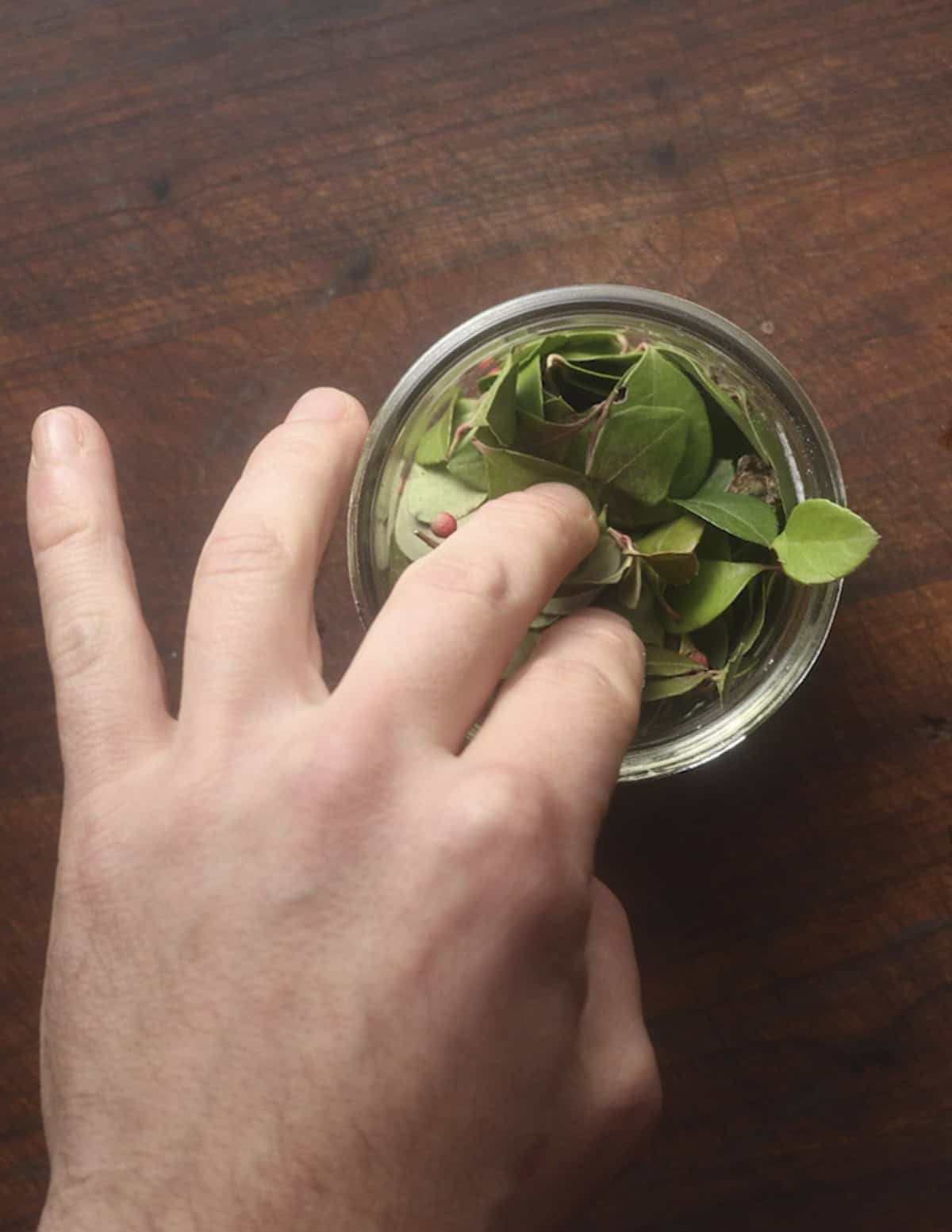
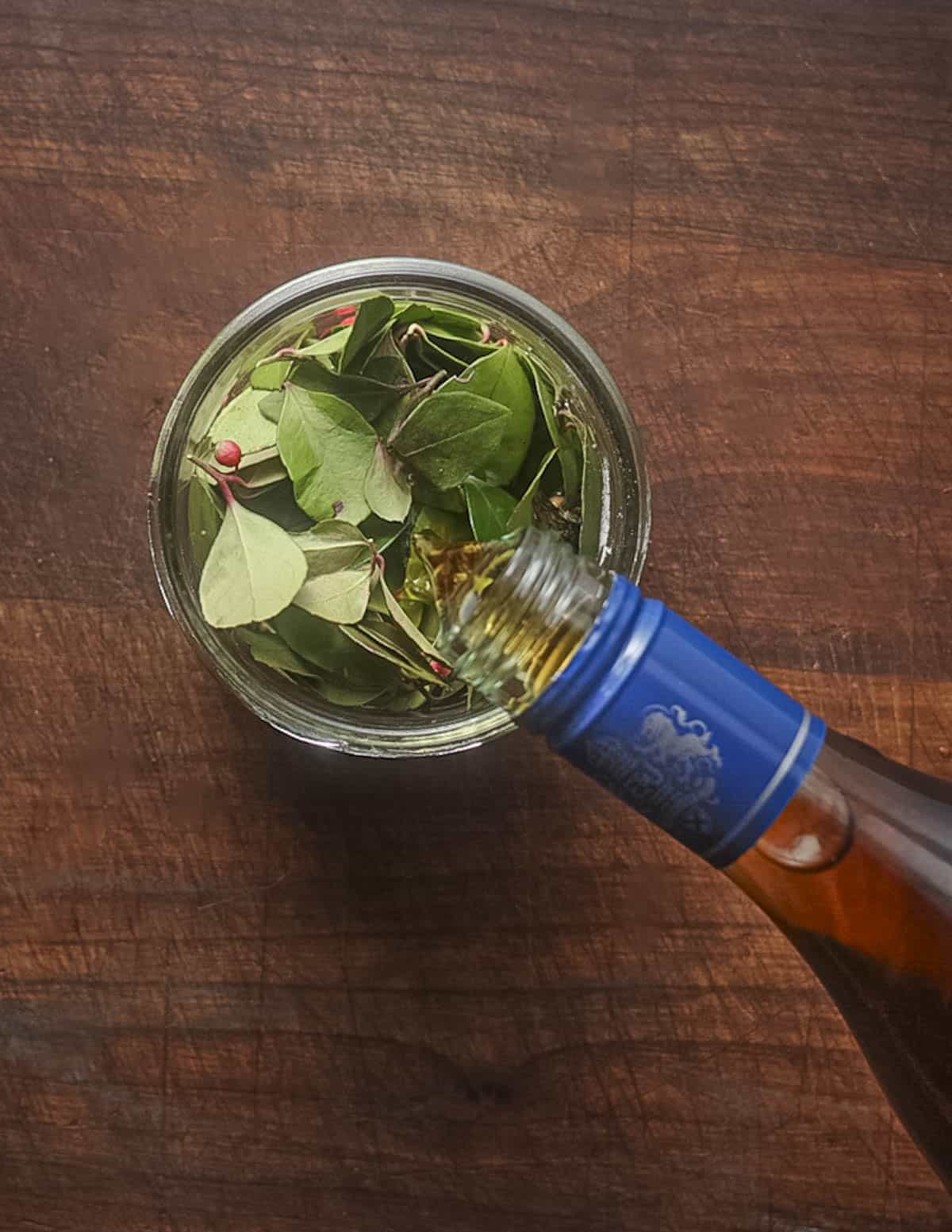
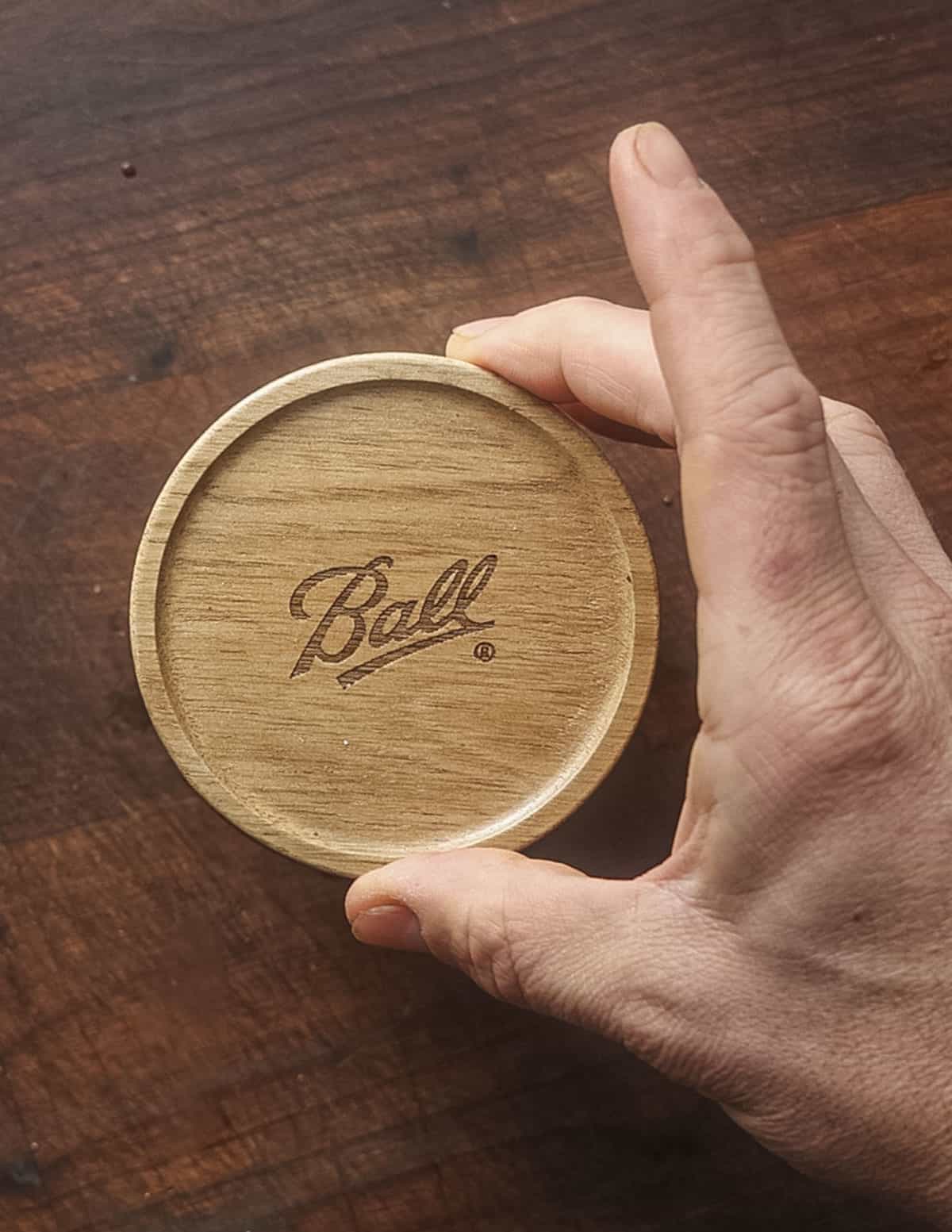

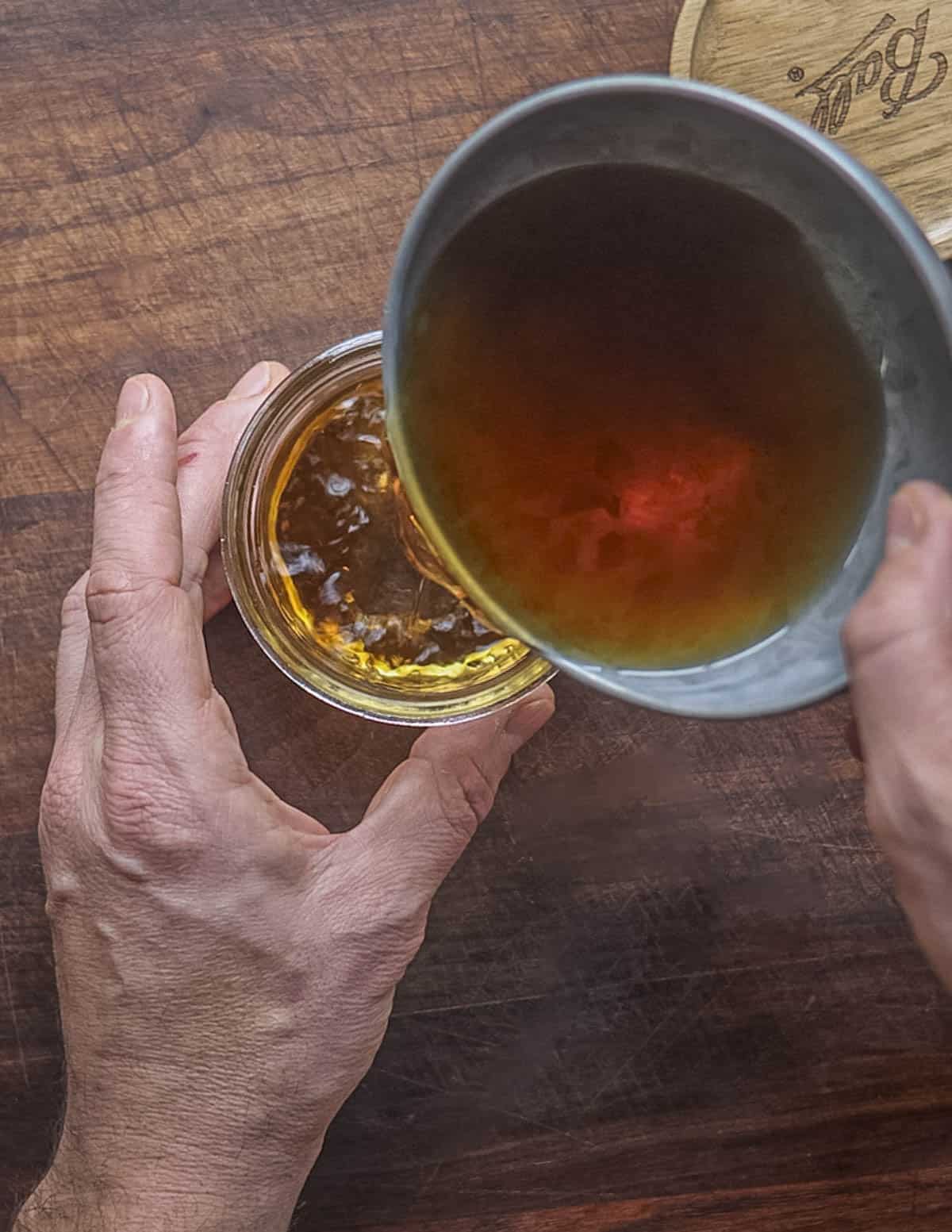
The finished extract can be used to flavor desserts and is particularly good in drinks and dairy based dishes. Wintergreen also loves red fruit, especially strawberries.
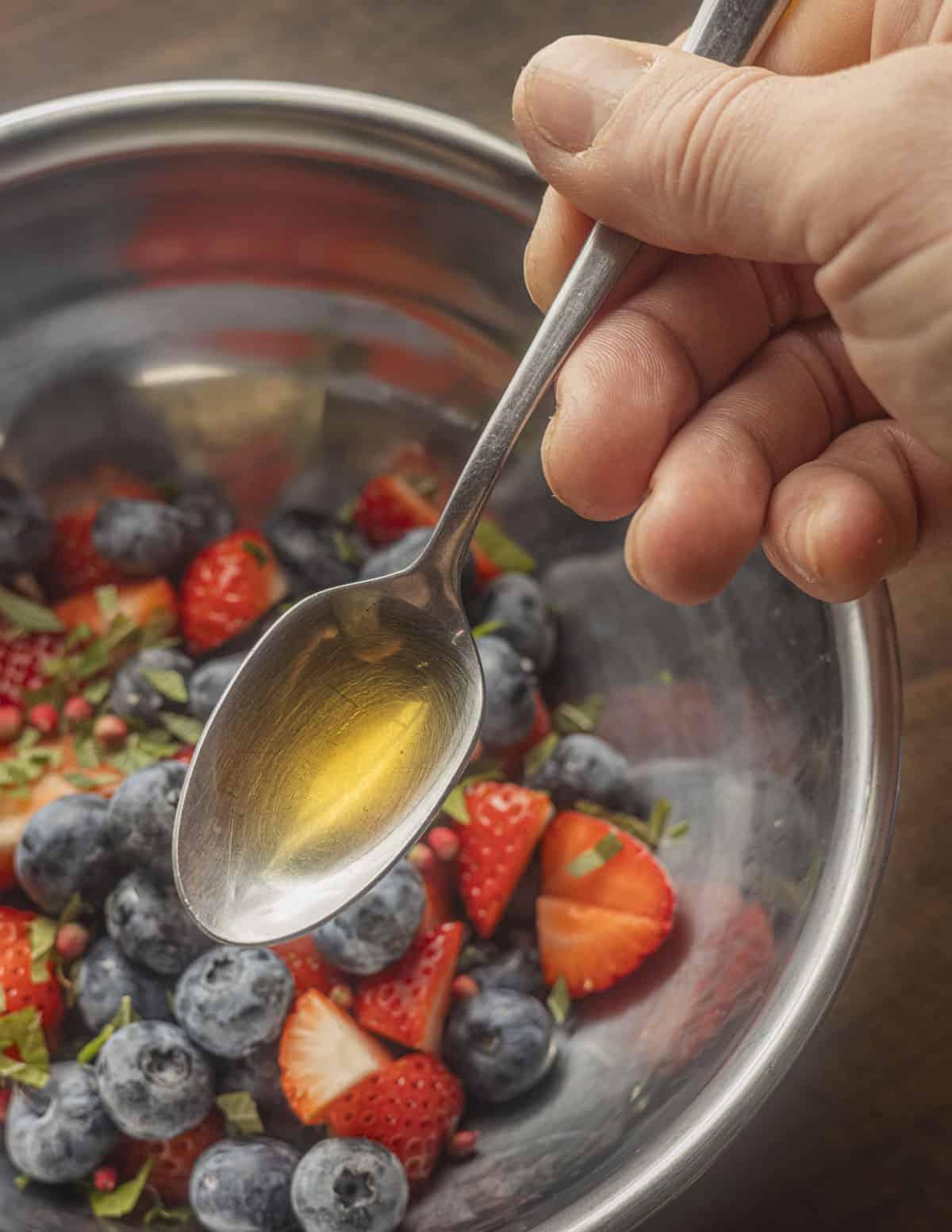
I used to have my bartenders add a splash of the extract to a grasshopper ice cream drink. Here's a few other ideas:
- Use to flavor drinks like lemonade, teas, cocktails and liqueurs like creme de cassis
- Frostings
- Fruit Sauces and fruit fillings
- Added as you would vanilla extract and in combination with it.

Safety, Medicinal Uses & Properties
It's important to note that while wintergreen has some medicinal effects, studies and discussions of its toxicity almost always refer to oil of wintergreen, not the fresh plant harvested in the woods.
Oil of wintergreen is a concentrated extract that should never be consumed in it's raw form (even a few teaspoons could be lethal to children). It's used in manufacturing to make muscle and joint creams like Icy Hot and Bengay, as well as other products like mouthwash.

Wintergreen has long been used for in folk remedies for pain relief, which should come as no surprise as the plant contains methyl salicylate, which Web MD refers to as an "aspirin-like compound".
People with a salicylate or aspirin allergy may want to steer clear of the plant, and it would be unwise for anyone to eat large amounts of the raw leaves of fruit which could cause a medicinal reaction. That said, the plant is safe to use since the leaves are discarded after infusing, and the plant in general is safe used as an herb in very small amounts as I describe on this website.

Anjanette Argo
Appreciate it from the bottom of my heart! ❤️
London
Hi Alan! I just wanted to leave a comment thanking you for this wonderful website! I love foraging and cooking with foraged ingredients so this is perfect, but I also really appreciate the photos you include in each article! I illustrate plants as a hobby of mine and if I’m doodling a plant I am struggling to find good quality reference photos of I always know I can count on you to have some fantastic, well lit and clear photos of the plants and their different parts. Thank you for all you do!
Alan Bergo
Hey thanks London that means a lot to me.